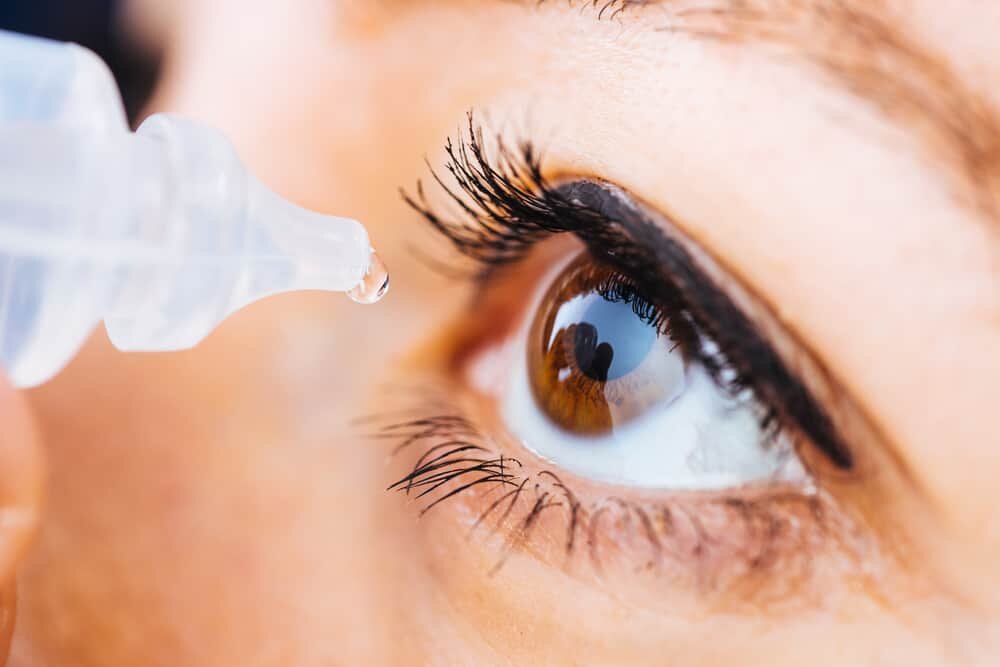Watery Eyes
WATERY EYES
WHY DO I HAVE WATERY EYES?
Watery eyes can be caused by either poor tear drainage or excessive tear production.
Watery eyes can be a nuisance to daily life, often causing irritation or affecting vision. A number of conditions can cause watery eyes and are outlined below.
DRY EYES CAN CAUSE WATERY EYES!
Dry eye disease is a complex condition, defined as “a multifactorial disease of the tears and ocular surface that results in symptoms of discomfort, visual disturbance, and tear film instability with potential damage to the ocular surface.” [1]
DRY EYE DISEASE CAN BE DIVIDED INTO TWO MAIN GROUPS:
EVAPORATIVE DRY EYE (EDE) DISEASE
Evaporative dry eye occurs when there is an excessive loss of water from the ocular surface in the presence of normal tear production.
The leading cause of evaporative dry eye disease is Meibomian Gland Dysfunction (MGD), also known as posterior blepharitis. Meibomian glands are oil glands that exist in the top and bottom eyelids. These glands produce oils that spread across the surface of the eyes when we blink. The oils produced are important as they form part of the tear layer that coats the surface of the eyes and prevents the water component of the tear layer from evaporating from the ocular surface. When one has MGD, glands become inflamed and release poor quality oils, eventually becoming blocked. This causes a disruption in the tear film covering the surface of the eyes, allowing the water component of tears to evaporate faster. As the tears evaporate from the eyes, this instability causes inflammatory mediators to be released, leading to damage to the ocular surface as well as reflex tearing. Watery eyes as a symptom of dry eyes can occur as there is often excessive reflex tearing.
The Tear Film and Ocular Surface Society (TFOS) report on the management of dry eye disease highlights the significant role that ocular lubricants, lid hygiene and warm compress play in combating dry eye disease caused by MGD. Due to the loss of an effective tear layer in evaporative dry eye disease, lubricating eye drops containing oils to replace the lipids lost are beneficial in treating symptoms. In combination with this, using a warm compress and massaging the eyelids can be effective at-home treatments when consistent for 4 - 6 weeks. In the case that the condition is more serious, oral medication can also be prescribed such as doxycycline, which aids in reducing inflammation around the glands.
AQUEOUS-DEFICIENT DRY EYE (ADE) DISEASE
Aqueous-Deficient Dry Eye occurs when there is underproduction or under secretion of the water component of the tear film.
The two main classes of Aqueous-deficient Dry Eye disease are Sjogren Syndrome Dry Eye (SSDE) and Non-Sjogren Syndrome (NSSDE). Sjogren Syndrome is an autoimmune disorder that destroys the glands that produce tears and saliva, causing symptoms of dry eyes and mouth. Non-Sjogren related causes include systemic drugs and lacrimal duct obstruction. Similar to the pathophysiology of EDE Disease, ADE causes an imbalance in tear film stability, resulting in an inflammatory reaction in the eyes. This form of dry eye is less of a cause of watery eyes as tear secretion is affected, however, irritation and blurred vision can still occur due to an inadequate tear layer.
Treatment for Aqueous-deficient Dry Eye (ADE) disease mentioned by the TFOS report includes, but is not limited to, tear conservation treatments with punctal pugs, biological tear substitutes and topical secretagogues. These treatments require specialist care and are not as common as ADE accounts for only a tenth of dry eye disease. [3]
TEAR DRAINAGE SYSTEM
The tear drainage system begins at the puncta, a small opening on the nasal corner of the top and bottom eyelids. The tears drain through this hole into tubes called the canaliculi which eventually lead to the nasolacrimal sac. Further drainage occurs through the nasolacrimal duct which brings the fluid into the nasal cavity. A disruption can occur at any point of the tear drainage system and in doing so can cause a build-up of tears in the eyes, resulting in watery eyes.
Eyelid positioning is a common contributor to watery eyes. With age, there is an increasing amount of laxity in the lower eyelids, this results in the lower eyelid drooping down and turning outwards away from its normal position against the eye. This alters the position of the drainage opening (punctum) and instead of draining into the system, the tears build up and start running down the cheeks. This can be surgically corrected by undergoing a blepharoplasty which removes excess fat, muscle and skin, tightening the eyelid to its original position.
Stenosis (narrowing) at any point in the drainage system can also occur, obstructing the drainage system. At the level of the punctum, punctal dilation can occur either by probing or surgically widening the drainage hole. Another surgical treatment performed is a dacryocystorhinostomy where an alternate pathway for the tears is created to drain into the nose in the case that no other methods improve drainage. Infection can also cause a closure in the drainage system and appropriate antibiotic treatment can be prescribed depending on the causative agent.
REFERENCES
The definition and classification of dry eye disease: report of the Definition and Classification Subcommittee of the International Dry Eye WorkShop (2007). (2007). The ocular surface, 5(2), 75–92. https://doi.org/10.1016/s1542-0124(12)70081-2
Jones, L., Downie, L. E., Korb, D., Benitez-Del-Castillo, J. M., Dana, R., Deng, S. X., Dong, P. N., Geerling, G., Hida, R. Y., Liu, Y., Seo, K. Y., Tauber, J., Wakamatsu, T. H., Xu, J., Wolffsohn, J. S., & Craig, J. P. (2017). TFOS DEWS II Management and Therapy Report. The ocular surface, 15(3), 575–628. Reference here
Findlay, Q., & Reid, K. (2018). Dry eye disease: when to treat and when to refer. Australian prescriber, 41(5), 160–163. https://doi.org/10.18773/austprescr.2018.048

